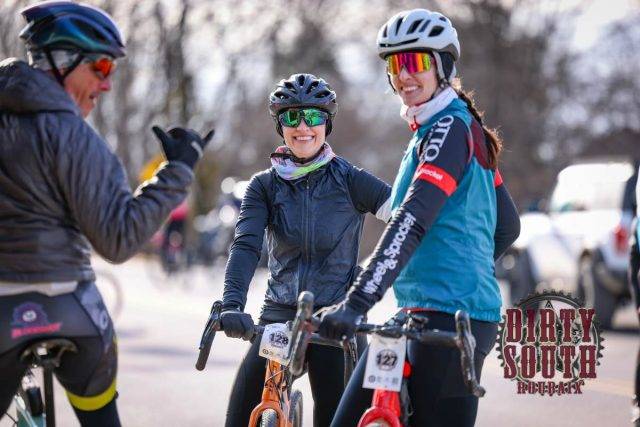
With my 2024 cyclocross season winding down, I had a “rust-buster” race on my mind to kick off the year. I decided to revisit The Dirty South Roubaix, a race I had to pull out of due to illness the previous year. By the time late February 2025 rolled around, I figured I’d be itching to hit the gravel again—or so I thought. Fast forward to late February, and I had completely forgotten I’d signed up for the event. With my AirBnB set up by teammates and gear (mostly) packed, I was ready for the 6-hour trek to the farthest corner of Illinois you can get without leaving the state.
Many photos in this article by Colson Photo
Early-season races like this are all about preparing for the year ahead, so I planned on treating this as a focused training ride. However, when my teammates and I prepped for a shake-out ride the day before the big race, I realized I had left my water bottles and nutrition at home. Not an ideal situation. That night, we stopped by registration, and they kindly offered to sell me two bottles from their sponsored bike shop. A huge thank you to the mechanic at The Bike Surgeon of Carbondale for coming out to the restaurant where we were registering and saving me from a hydration crisis. I also have to thank my teammates for sharing their extra nutrition with me; you guys rock.
Given the comparatively southern location, I expected a warm race. However, this was still springtime in the Midwest. I awoke to find race morning frigid, and I found myself going back and forth to the car for extra base layers and windproof gear. March 1st quickly reminded me that spring had yet to fully arrive, with winds gusting at 14.3 mph. At the last moment before heading to the start line, I grabbed an extra jacket—which turned out to be a great decision.
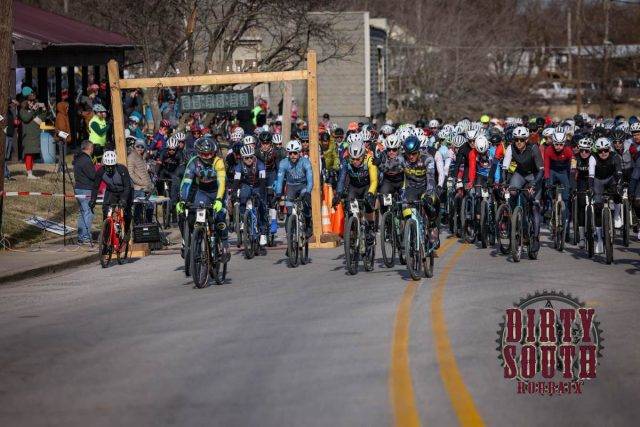
The race began at a cautious pace, with no one trying to make too aggressive of a move as the peloton formed. Attesting to the grassroots support of the community, the event’s rider limit of 700 far exceeded the 400 resident population of the town of Alto Pass—where the race started. Needless to say, our presence there felt like a true gravel cycling takeover. As we rolled onto the course, I couldn’t help but notice the overwhelming background soundtrack of a chorus of frogs and the tapping of horse hooves striding alongside the cyclists accompanying each change of gears as we climbed into the distance. Adding to the overall ambiance, I even spotted one very large, very dead armadillo carcass on the roadside, reminding me that I was, in fact, still in southern Illinois.
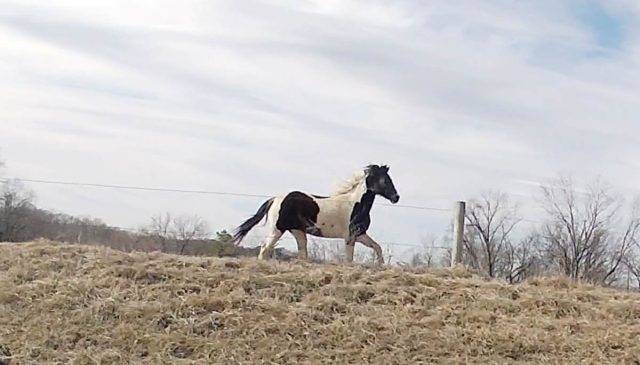
As we approached the first sizable incline, our efforts were rewarded with a vista that served as a preview of the elevation to come. Considering the flatness of much of Illinois, the rolling landscape of southern Illinois provided an apt and welcomed juxtaposition. The varied landscape, climbs, and accompanying vistas remain a huge appeal of the Dirty South Roubaix and are just about perfect for many of the gravel racers looking to test their early-season fitness and get off their trainers. The course more than delivers with relentless elevation changes, and those of us used to training in the Midwestern flatlands were in for a substantial test of grit. While you can travel to the driftless region north towards Wisconsin, the character of the climbs throughout Alto Pass are a different kind of beast.
The first five major climbs left their mark, but the real challenge was yet to come. These were not the run-of-the-mill Midwest speedbumps to which I was familiar with; they were a rare brand of beastly inclines, both steep and relentlessly long, that aren’t normally found in most of the Midwest. In the rare moment when I wasn’t huffing and puffing up the hills, I’d steal a glance and take a moment to admire the gorgeous rock cliffs and beautiful vistas overlooking the canopy of the Shawnee National Forest.
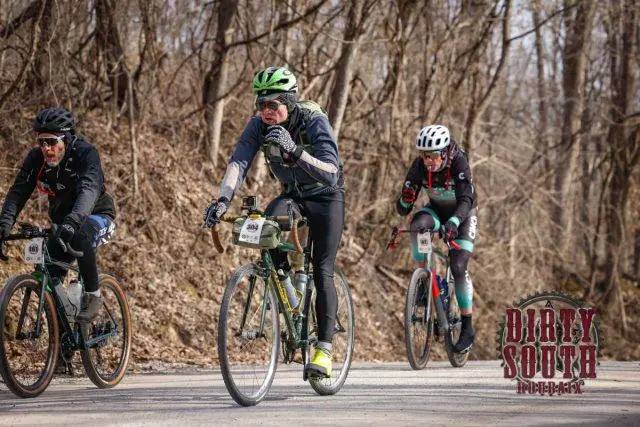
After finishing the first climb, I zoomed downhill at 43 mph testing the fortitude of my rim-based cantilever brakes. Somehow, while navigating the descent unscathed, I started to notice fellow racers along the roadside, with mechanicals popping up every five miles or so. During the second major climb, I stopped for a few minutes to help a fellow rider who was having a chain issue. Unfortunately, I couldn’t find the chain tool they needed, and it wasn’t until I was five miles ahead that I remembered I had it in my hydration pack (sorry, mate!)
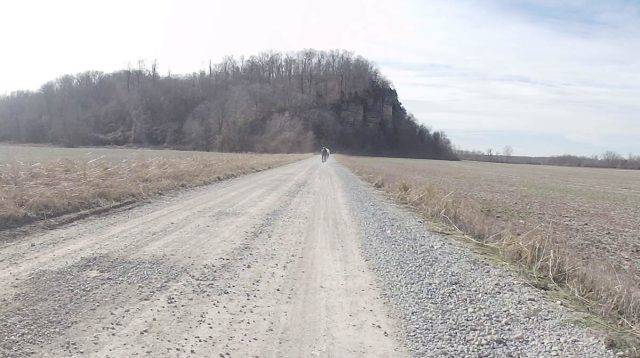
As I rolled across the elevated portions of a dried levy, a steady tailwind and some friendly riders helped me keep pace. That’s when I realized I hadn’t put my gloves back on after helping the rider with the mangled chain. Although I had felt overheated during the climb, my bare hands turned out to be the perfect temperature gauge for the rest of my body, cooling me down just enough. Normally, I’m a firm believer in wearing gloves for comfort, warmth, and practicality. However, between my multiple layers, windproof jacket, and the day’s warming temperature, I was surprisingly comfortable. A few shallow water-crossings later, a section of wet gravel made it feel like my rear tire had gone flat. Sadly, the only thing deflated was my ego, as I realized the course was approaching the next and most brutal gravel climb Dirty South Roubaix had to offer- Silka Hill.
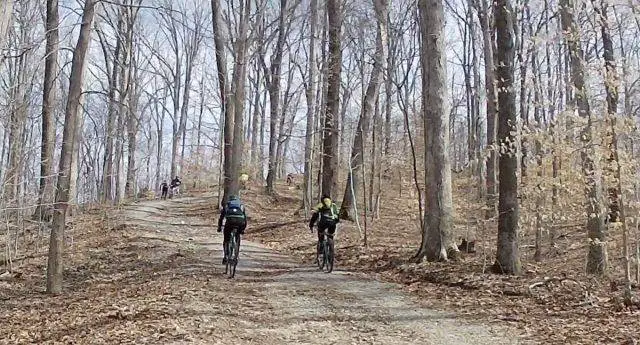
I had heard whispers in my course recon the day before that the Silka Hill Climb was described as “impassable,”. Unfortunately, for me that description turned out to be 100% accurate. I watched one hopeful rider pass me on their way to the top, but as soon as they encountered a false flat, the climb kicked yet again, and they realized they misjudged their efforts. The combination of loose gravel and inclines over 18% slowed our progress to a crawl, and we were reluctantly forced to dismount. Pushing my steel-frame bike uphill and struggling to maintain balance, I realized this climb was going to take more patience than I might have in reserve.
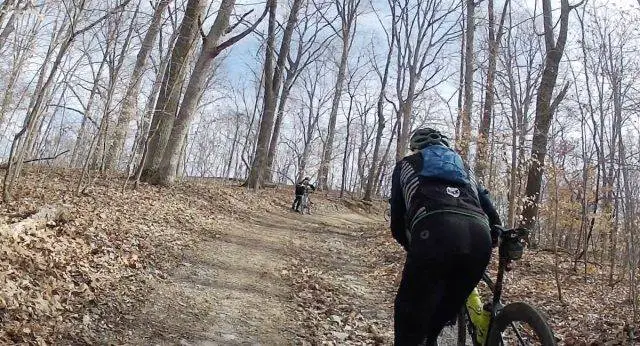
While knobby tires would have been helpful here, most riders (myself included) opted for capable file treads. My Bontrager CX Zeros, though excellent in most conditions, didn’t do me any favors on this climb. Luckily, by the grace of the bike gods, I lumbered over Silka Hill, and I found my tires still felt nimble and quick by the time I hit the section of the race in the Trail of Tears.
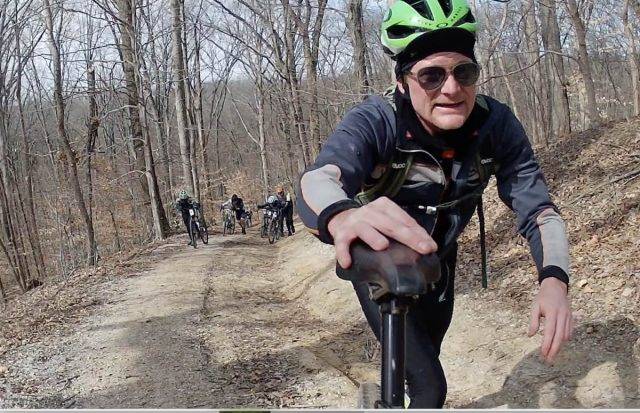
Once we reached the Trail of Tears, I was greeted by a pinpoint climb, followed by a fun and fast series of rollers that felt almost like a cyclocross course. As I sprinted from roller to roller, I got more than a little carried away. When I glanced at my GPS, I saw there was one more major climb awaiting me. A dramatic downhill gave way to another dried basin, and the sound of a rooster crowing awoke me from my daze. Though road weary, it was still morning, and there was more work to do before crossing the finish line. From there, a few more wet crossings awaited—one of which was deceivingly deep. As the cold water splashed onto my kit, I realized my extra Lycra and Merino wool socks served as a sponge. Just another surprise helping to remind me of the challenge that makes gravel racing so uniquely gravel.
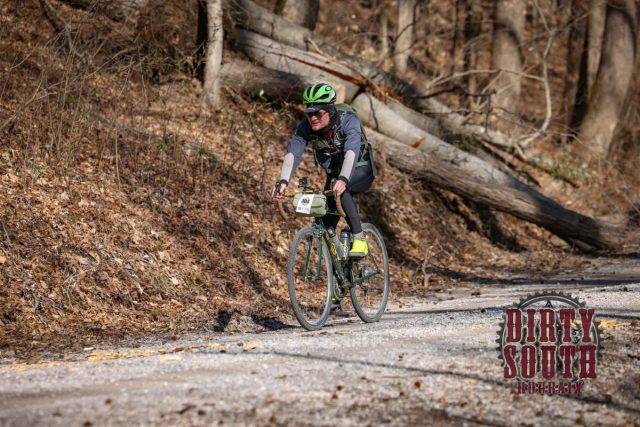
On the final stretch, I could see my AirBnB just off to the left, and for the first time, the temptation to stop was stronger than ever as I approached the brutal climb that awaited us in the last mile.
I’ve never encountered a race with such a punishing final climb, and this one, even (mostly) paved, was nothing short of a challenge. With my legs burning and my head down, I was determined not to dismount again. With the crowd cheering at the top, I somehow found the strength to make it across the apex and inched another few feet to the finish.
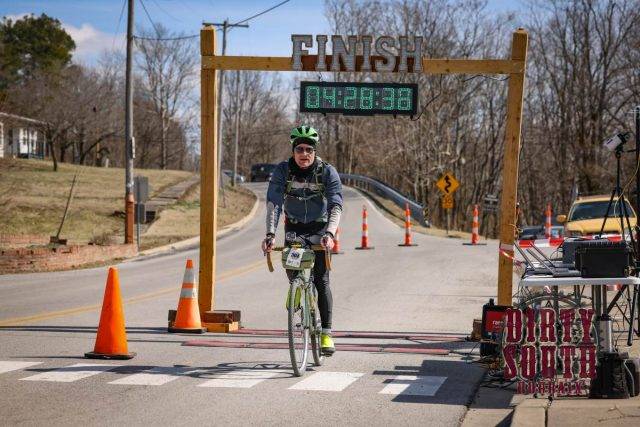
After crossing the finish line, I had to sit down and catch my breath. This first outing was nothing short of epic, and I can’t wait to take it on again next year. I can’t say I underestimated this race, but days later, and with my knees still screaming at me even on easy spins, I can say it left its mark. Rust busters like this are a great way to check in on where I stand early in the year, next time I just need to remember my water bottles, my chain tools, and my climbing legs.
Strava data: 62.75 miles in 4:22:50 with 3,560 ft of elevation gain, topping out at 43 mph and averaging 14.3 mph overall.
Article by Peter Meersman


Awesome account Peter!
What a day!!
Thank you to you and the Dirty South crew of Alto Pass, IL!
Nice write up! Getting pumped for the season ahead!! Thx for being out there early and sharing your story.